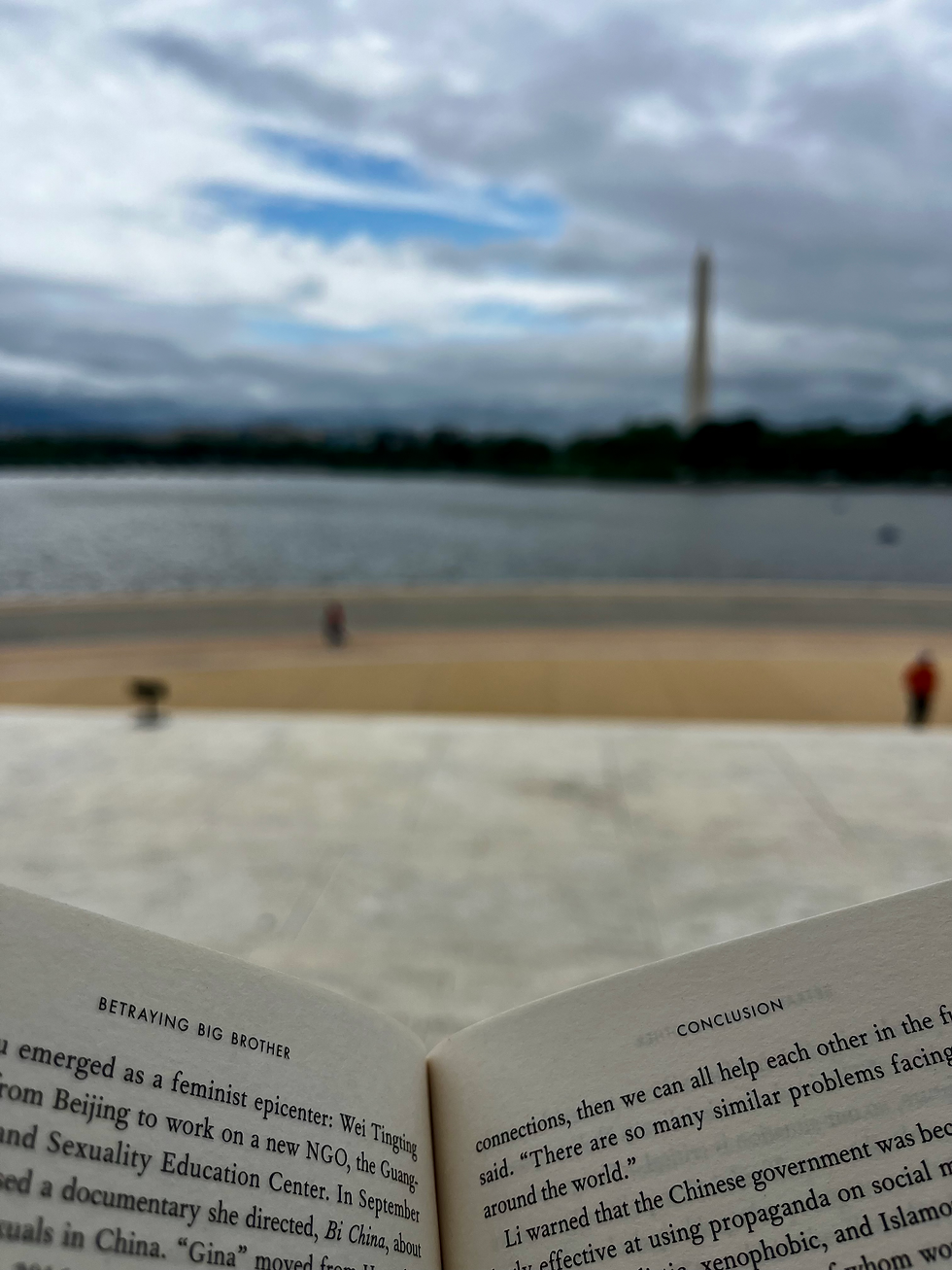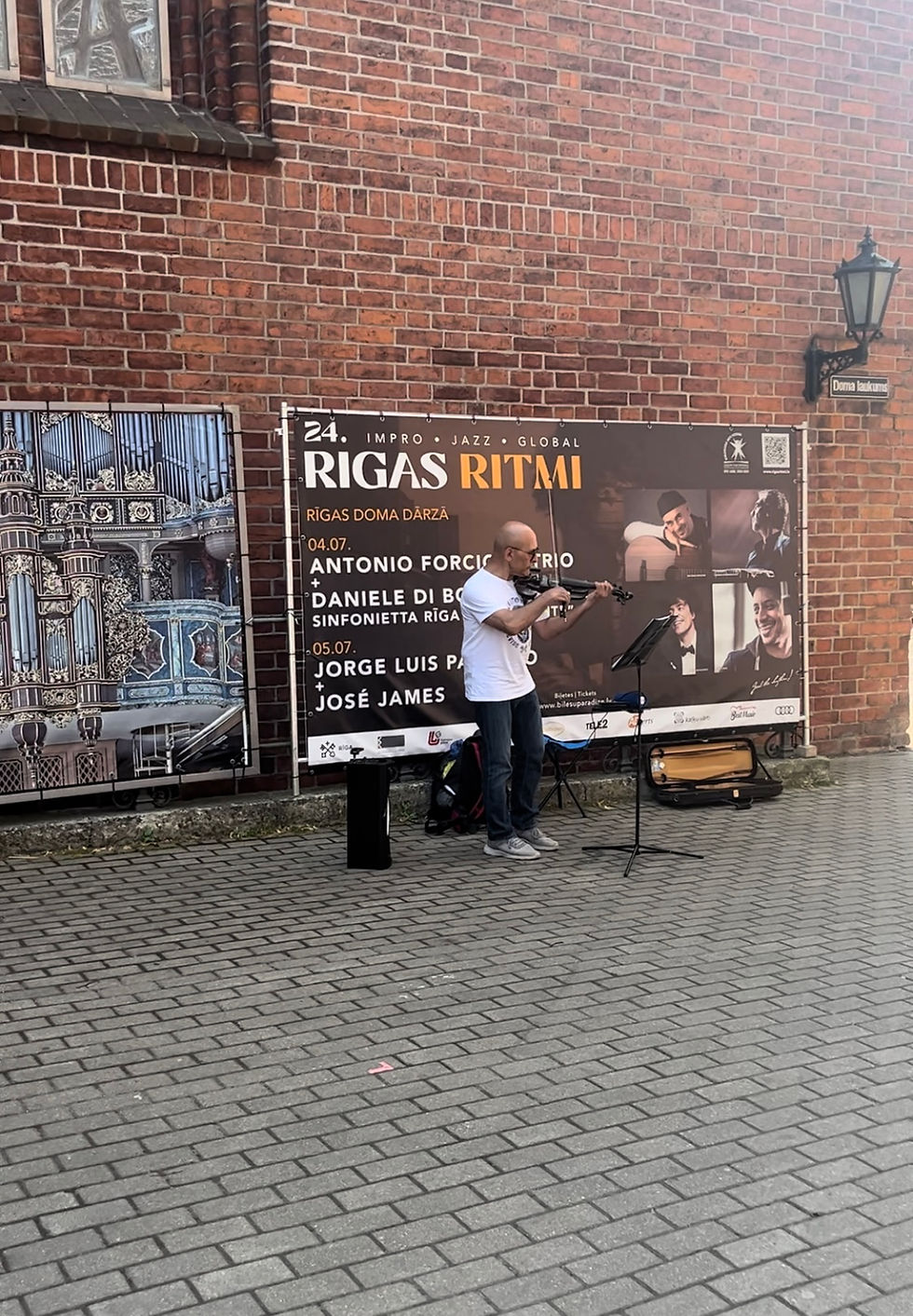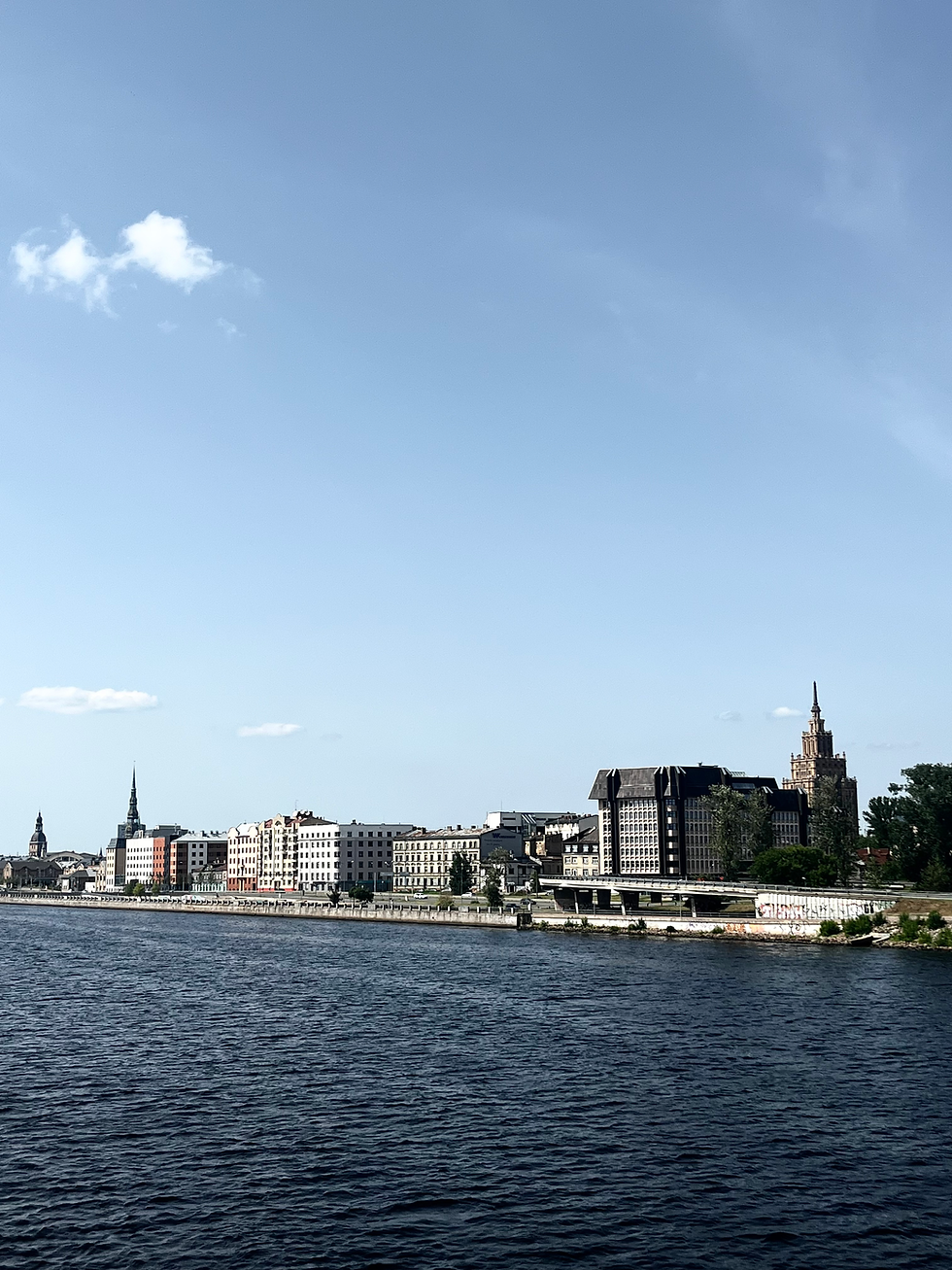In Defense of My Adopted Home (Washington DC)
- charlsiedoan
- Aug 14
- 8 min read
Updated: Aug 23

Two days after I marked one year of living in Washington, DC, the President of the United States held a press conference in which he called DC, essentially, a hellscape overrun with criminals, gangs, and violent drug addicts. I listened to snippets of his remarks as I walked through the Foggy Bottom neighborhood to a coffee shop, where I’m such a regular that they know my name, my order, where I go to school, and where I worked this summer.
This blog contains my thoughts and feelings about many cities, so I thought it was only natural to now sing the praises of my adopted home, especially now, when it appears to need defending. When I was a little girl in the Dallas suburbs, I hated the thought of living in a city-city, of living somewhere upright instead of spread out. But now, cities are the places I love the most, because everything that I find interesting and fascinating in my adult life has to do with people. And any place with so many people, living their different lives in such close proximity, is a place that I find easy to love.

There’s nothing better than being a young law student in DC, because the city’s political flavor is omnipresent, especially if you are looking for it, as I always am. My walk home from school has been interrupted by a motorcade or two escorted down Pennsylvania Avenue by cops on motorcycles. The Iraqi embassy, housed in a terracotta-colored building with a sun carved over the gated garage, sits a block from the park in Dupont Circle, where old men play chess with Brooks-Brothers-wearing-lobbyists. Ads for military contractors like Lockheed Martin and Raytheon paper the metro stations alongside the typical ads for VPN services and online MBA programs. The Embassy of Tanzania sits across the street from my apartment complex, and a month ago, dozens of posters popped up around neighborhood accusing the matronly Tanzanian president of torturing prisoners. I Googled it—she probably is guilty. Someone, presumably from the embassy, has scratched out her face and the name “Tanzania” on every poster, I’m guessing to quiet the accusations, to literally save the country’s face.

It can be exhausting sometimes, especially right now, as a deeply blue city—which went 92% for Kamala Harris in 2024—strains against the bloody-red Trump administration. Stickers on traffic lights call Trump “diaper Donald” or “Donald Rump,” and accuse him of various lewd acts involving, mostly, his daughter or Vladimir Putin. Secret Service agents ride bikes near Lafayette Park, which is increasingly fenced off and filled with protestors calling for an end to every ill in the world right now—and there are too many. Once, I saw an old man sitting on a folding chair declaring through a megaphone that Volodymyr Zelenskyy, president of Ukraine, was nothing but a crack addict. In March, a series of large posters appeared near a bright-pink bagel shop offering Elon Musk’s sperm to any woman who wanted to procreate. They had disappeared by the next time I walked by.
In the part of the city where I live—home to white-shoe law firms, the State Department, the International Monetary Fund and World Bank, and my law school—the collective mood is impacted by the news. When Trump fires a new wave of federal workers, or announces new tariffs, or launches missile strikes against a certain Persian-speaking country in Asia, people smile less in the street, signs appear in the restaurants and coffee shops, and posters appear asking BigLaw firms to resist executive orders. My friends and I learned about the aforementioned missile strikes on Iran on a Saturday night in our regular bar (it is our regular bar because it’s a block from the law school, has cheap happy hour, and you can order with a QR code). I ordered another beer and a shot of tequila, and then two of us took a drunken walk all the way to the World War II memorial to ponder if this was the beginning of World War III.

But not all of the political rhetoric is DC is combative or depressing, and much of it is fascinating. It’s not America’s most diverse city—surely it’s second to New York—but it has a distinctly intellectual, international, and lively feel. I hear German on the remarkably clean metro and Persian and French in the café by school. Independent bookstores are sprinkled around the city and make great destinations for an afternoon walk, even if you never buy anything. One store in Dupont Circle used to be located in Shanghai before its owner fled political repression. It now offers the DC community a collection of books that the Chinese Communist Party surely wouldn’t like: about Chinese feminism, Tibet, the ills of the Cultural Revolution, in both Mandarin and English. Signs in the public library appear in Amharic alongside English and Spanish, catering to the city’s large Ethiopian population. A few members of that population has blessed us with very good Ethiopian restaurants serving injera, doro wat, and beef tibs that you must eat with your hands. Near the White House, there’s a small coffee shop that serves only Indonesian coffee.

I like exploring DC’s many coffee shops, the independent ones that aren’t national chains. Filter, in Foggy Bottom only two blocks from school, is my favorite. But I’ve been to so many places that I can match you to any kind of coffee shop experience you’re looking for: a place with the cheapest coffee I’ve found that is still good (where a friend and I once saw John Bolton of neocon fame); a trendy spot that’s expensive but feels like the right place to go after doing hot yoga (my friend and I always go to the free class, so it balances out financially); a place to drink Turkish coffee from a tiny cup; a place to get coffee and then go sit by the Potomac; a place to stop and get coffee on your drive back into the city from the Baltimore airport (where the cheap airlines fly out of).
DC is also a very young city—attracting bright-eyed ideologues fresh out of college or grad school, taking their first stab at being real adults and wanting to change the world (or make money or get into politics). The city welcomes them (us, I should say, since I belong to this group) with activities like free movie screenings on the Wharf every Thursday during the summer, cheap baseball tickets, trendy neighborhoods like Adams Morgan stuffed with bars and smelling faintly of weed, recreational volleyball and kickball leagues that play in the public parks. DC is a nice place to enjoy being young, to meet your friends and drink and laugh and talk, to spend your money that you don’t have on things that could be more expensive if you lived in that other Mecca of young, ambitious people: Manhattan.

Speaking of parks, we have a lot of them. The Mall, of course, America’s Backyard, where the statue of Abraham Lincoln in the Lincoln Memorial watches the tourists running each other over on scooters, locals disassociating on his steps, and ducks paddling in the Reflecting Pool. I have been one of those locals before, leaning against my backpack after a particularly grueling exam. The Jefferson Memorial, across the Tidal Basin, is my favorite monument but is unfortunately quite a trek and is usually overrun with middle school tour groups. The park at the center of Dupont Circle boasts a (rarely-operating) marble fountain and clusters of Adirondack chairs on the grass. Small local bands perform on the pavement near the fountain, couples sit in side-by-side chairs and hold hands, there’s a farmer’s market on Sunday mornings, and a police car with its lights on but sirens off parks in front of the CVS across the circle where things always seem to happen. Georgetown Waterfront Park stretches along the Potomac, with a view of Arlington, Virginia to the right and the Kennedy Center to the left. There isn’t as much seating there as in Dupont Circle, but you can watch children running through the water features, people kayaking in the river.

The parks—and intersections and street corners—are also home to the illnesses that plague every large American city. Drug addiction and homelessness are visible in most neighborhoods. I called 911 for the first time in front of a bookstore in the Dupont Circle neighborhood, where a middle-aged man who had been panhandling while sitting on an upturned bucket was lying unconscious in the street. The paramedics revived him with a shot of Narcan up the nostrils—which means it had been either a heroin or fentanyl overdose. I found a book in the public library a few days later, a memoir about the opioid crisis, written by a paramedic, and learned that almost 90% of opioid addicts in the U.S. started off taking prescribed painkillers like OxyContin to treat something like a broken arm or a back injury. In short, it could happen to any of us, so I try not to judge.

The homeless people—or, I should say, unhoused, because “home” is a much deeper concept than just a house, and even people without a house have homes—are, on the whole, not bothering anyone. I see a man almost every day on my walk to school sitting on the pavement and leaning against a military-surplus backpack. Sometimes he’s smoking, sometimes he’s drawing, sometimes he’s sleeping. He has the same ragged sign with him always, with the words “MILK, any type” inked in Sharpie on the cardboard. I bring him milk sometimes from the grocery store near my apartment. During a heat wave in June, I tried to hand him Gatorade and water along with the milk, but he said he didn’t need the Gatorade, only the milk and water.
Some unhoused people live in tents that they take care of as fastidiously as I take care of my apartment. They have welcome mats in front of the doorflap, Bible verses written neatly on the outside of the tent, small fake plants inside. You see the tents disappear in the winter when the snow comes and the wind is unbearable. The federal crackdown that is supposed to be coming promises to eliminate homeless encampments, which seems incredibly cruel and unfair. I don’t know where they are supposed to go.
You have the things you see in every city: the unnervingly happy youths in polo shirts asking passersby if they know about the Special Olympics or Save the Children or Doctors Without Borders. The people who park themselves at the top of metro station escalators to tell you, through a megaphone, to ACCEPT JESUS. You have the odd man who enjoys making women uncomfortable. And crime rears its head both sporadically, everywhere, and systematically, in certain neighborhoods, especially in the south of the city. A friend who lives in Columbia Heights regularly hears gunshots in the night. She only calls the police if it sounds like someone’s returning fire. A youth curfew is in place in Navy Yard because some sixteen-year-olds are in the habit of smashing car windows at midnight. These are allegedly the “roving youths” that former Fox News anchor and current U.S. Attorney for DC, Jeanine Pirro, seethed about during that press conference. I can confidently say that most of my classmates, once we pass the bar in two years, would be a better U.S. Attorney than Jeanine Pirro.

But while the ills of DC aren’t unique, the good things are. There’s a community snowball fight during the first snow of winter, there’s a high-heel race in June at the start of Pride month. There are the fireworks on the Fourth of July that bring people up to the roof, the license plates that say “taxation without representation” because DC residents have no voting member in Congress but are still federally taxed. The cherry blossoms blooming around the Tidal Basin in March attract thousands of tourists wearing garishly pink clothes. The tidy, narrow row houses in older neighborhoods crowd under the big trees along red-brick sidewalks. A taxi driver always feeds the pigeons on my block, sometimes with a sleeve of mini powdered donuts.
In conclusion, DC is not a hellscape. Far from it.




Comments